The campaign of 1807 in Poland
day by day
Following the Prussian Campaign, where the French, during the double battle of Auerstaedt and Jena on 14 October 1806, annihilated almost the entire Prussian army, Napoleon settled in Berlin. But the Russians, part of the fourth coalition against France, did not fight there, and the remaining Prussian troops retreated to Poland, placing themselves under the protection of Tsar Alexander I (Александр I Павлович Романов), who appointed General Levin August Gottlieb Theophil, Count von Bennigsen (Леонтий Леонтьевич Беннигсен) to face the French.
At these news, Napoleon I joined the Grande Armée on the banks of the river Oder. The Polish Campaign was about to begin.
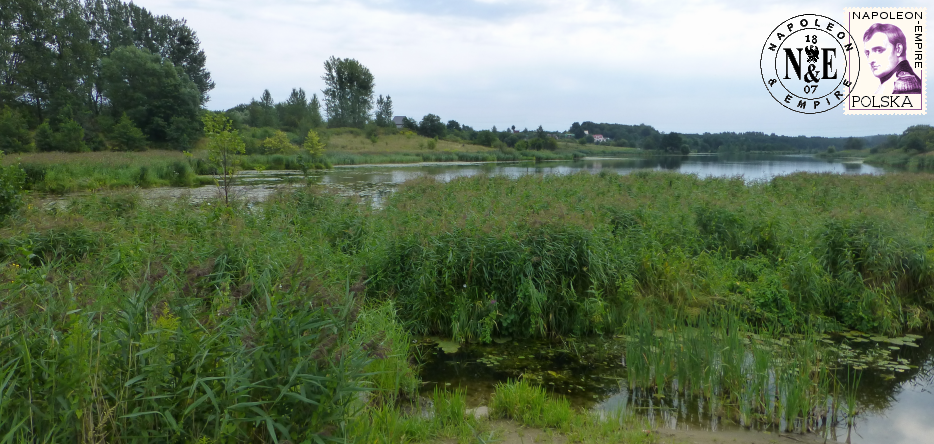
We followed the movements of the Emperor and the Grande Armée day after day, and during a stay on site captured the locations of this campaign in images, in particular the battlefields of Eylau and Friedland, about thirty kilometers apart.
This region, East Prussia [Ostpreußen], was located between the Vistula and the Niemen rivers, overlooking the Baltic Sea. It was completely emptied of its inhabitants (the few survivors of the Red Army operations of 1945 were deported following an agreement between the victors, this until 1948), and divided between Poland (to the south) and the Russian Federation (to the north). The places, rural and poor, have changed little since 1807...
 Toponymy of the Polish campaign
Toponymy of the Polish campaign
November 1806
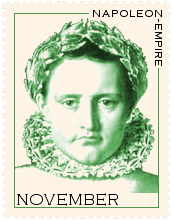
- November 25 - Napoleon, who had left Berlin at 3 a.m., arrived at Kustrin [Kostrzyn nad Odrą, present-day Poland] [52.58746, 14.65025], on the right bank of the river Oder, at about 10 a.m. The Polish Campaign began.
- November 26 - Leaving at 2 a.m., he traveled to Meseritz [Międzyrzecz] [52.43333, 15.58333], 84 kilometers to the east-southeast. There he met his Grand Marshal of the Palace, Géraud Michel Duroc, who informed him that the King of Prussia Frederick William III had rejected the suspension of arms that had been proposed to him.
- November 27 - The Emperor left at 3 a.m. to head 100 kilometers further east to Posen [Poznań], on the Warta River, where he arrived in the rain at 10 p.m. The city had been illuminated for him. He settled in the former Jesuit College [now the town hall] [52.40641, 16.93532] adjacent to the small Saint-Stanislas basilica, and would remain in the city until December 15th inclusive, while the cold of winter set in.
December 1806
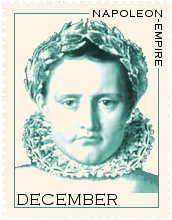
- December 1st to 14 - Napoleon, still in Posen, drew up battle plans, in particular a maneuver to turn the Russian left flank towards Pułtusk, as he mentioned in correspondence with Joachim Murat, or the right flank by moving, via Thorn [Toruń], between Königsberg [Kaliningrad - Калининград] and Pułtusk. On the 11th, he signed with Prince-Elector Frederick Augustus of Saxony a peace treaty elevating the Duchy of Saxony to the dignity of a kingdom, in the Redutowa Hall of the Saski Hotel [ul. Wrocławska 25].
- December 15 - Learning from Murat that the Russians were massing their forces north of the Narew , Napoleon decided to direct his attack on this river.
- December 16 - He left Posen at 3 a.m. and went to Kłodawa [52.25418, 18.91322], where he slept.
- December 17 - He left during the night for Kutno [52.23333, 19.36667] which he reached at 1 p.m., after a journey on terrible roads and paths.
- December 18 - He left Kutno heading east. In Łowicz [52.10731, 19.943560] , he stopped at the Imperial Hotel on the main square, where he left his slow-moving carriage and continued on horseback. He then crossed Sochaczew , and arrived at Błonie [52.19473, 20.61727] , west of Warsaw.
- December 19 - He arrived in Warsaw [Warszawa] between 1 and 4 a.m., in the fog, and settled in the royal palace [Zamek Królewski] . He would stay four days in the capital of the province of South Prussia [Südpreußen], future capital of the Duchy of Warsaw.
- December 23 - Having left Warsaw at 1 a.m., the Emperor passed at 6 a.m. through Jabłonna [52.38115, 20.92052] 21 kilometers to the north-northwest, then headed for Okunin [52.43681, 20.76123] 15 kilometers further, where the engineers of the III Corps had rebuilt the bridge over the Narew [contemporary texts say the Bug, but this river flows into the Narew 25 kilometers further east...]. He went to reconnoiter the Wkra River as far as Pomiechowo [52.46789, 20.73532] on the other bank of the Narew, then arrived a little further upstream at Czarnowo [52.47990, 20.77184], a village that the division of General Charles Antoine Louis Alexis Morand had just taken from the Russians. The Emperor slept there in a thatched house.
- December 24 - Napoleon went back north to Nasielsk [52.58992, 20.80572], where he arrived at midday. It was pouring with rain.
- December 25 - With little information, he set out at daybreak with the Guard and the III Corps, heading northwest. Murat joined him at Słustowo. In the early afternoon, with new information, the III Corps turned northeast towards Gołymin, while the Emperor continued on to Nowe Miasto, then crossed the Sona River and spent the night at Lopaczyn [Łopacin] [52.75250, 20.66174].
- December 26 - At Lopaczyn, Napoleon remained in the dark all morning about the two battles that took place that day, in very difficult weather conditions (persistent thick fog, soggy and muddy fields). The first one, 30 kilometers to the east, in the vicinity of Pułtusk , pitted Jean Lannes against Levin August von Bennigsen. The second one, 20 kilometers east-northeast of Lopaczyn, pitted Marshals Davout, Augereau, Ney and Murat against the troops commanded by Prince Dmitry Golitsyn (Дми́трий Влади́мирович Голи́цын) in the vicinity of Gołymin, around the villages of Garnowo, to the southwest and Wadkowo, to the west . Warned of the cannonade shortly before 2:00 p.m., Napoleon set out towards the field of this second battle, but was unable to reach Gołymin until after the fighting had ended. Together with Marshal Soult, he then went to Paluki Castle [Pałucki] in Opinogóra Górna [52.88094, 20.76104], 12 kilometers to the northwest, to spend the night there.
- December 27 - Having received reports of the Battle of Pułtusk, he returned to Gołymin [52.81667, 20.86667] , where he slept in a barn.
- December 28 - He stayed in Gołymin .
- December 29 - In still terrible weather, he went to Pułtusk [52.70479, 21.09304] , a town located between two secondary branches of the Narew. He set up his headquarters in the episcopal castle and himself lodged in a house on the main square [Rynek 36, it has become a small Napoleonic museum]. He would stay there until January 1st.
- December 31 - Napoleon received the news of the birth on December 13th by Eléonore Denuelle de la Plaigne, maid of honor of Caroline Murat, of a boy who was his. This birth, which revealed to him that he was not sterile, would from then on decide him to divorce Joséphine.
January 1807
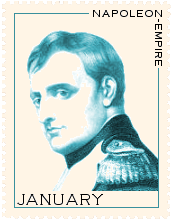
- January 1st - Napoleon returned to Warsaw, where he would stay until the 29th. It was on this day, at the Bronie coaching inn, that he first met an exquisite nineteen-year-old Polish woman, Maria Walewska née Łączyńska, disguised as a peasant. She implored him to promote Polish independence.
- January 13 - He sent General Henri-Gatien Bertrand as plenipotentiary to the Headquarters of the King of Prussia in Memel [Klaipėda] to discuss peace. There will be no sequel.
- January 18 - He invited Maria Walewska to his side, who would return the following evenings and would become his mistress after a few days.
- January 19 to 29 - Napoleon deployed an intense epistolary activity, and preparatory to the military operations that were announced against the Russians.
- January 30 - He left Warsaw at 6 o'clock heading north, passed through Pułtusk again and went to Pratznitz [Przasnysz] [53.03333, 20.88333], on the Węgierka River.
- January 31 - He was in Willenberg [Wielbark] at midday where he set up his Headquarters at the Domain Administration Office, on St. Wojciech Square [53.39756, 20.94505] [this house fell into disrepair over the years and was demolished in 1980]. He would remain there for two days.
February 1807
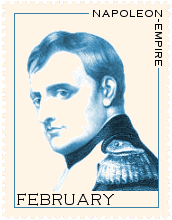
- February 2nd - He left Willenberg with the Guard for Passenheim [Pasym] [53.63333, 20.78333].
- February 3rd - He left very early in the morning in a northwesterly direction and arrived before noon at Allenstein [Olsztyn] . In the afternoon, while Marshal Soult's IV Corps was facing Bennigsen's Russian rearguard at Bergfriede [Barkweda], on the Alle River [Łyna], the Emperor moved to Göttkendorf [Gutkowo] [53.80431, 20.40539], from where he led the Battle of Allenstein (also called Jonkendorf or Jonkowo) and where he bivouacked.
- February 4 - He spent the night at Schlitt [Skolity] [53.89185, 20.21696].
- February 5 - He left Schlitt towards the north, passing through the hamlet of Deppen [Dąbrówka] [53.92369, 20.20355], then Waltersdorf [Włodowo] [53.94127, 20.15199] and Wolfsdorf [Wilczkowo] [54.00139, 20.24028] and reached in the afternoon Arnsdorf [Lubomino] [54.06667, 20.24028] where he settled in for the night (which, let us remember, falls early at this time of year and in these latitudes).
- February 6 - Heading northeast, he crossed Freimarkt [Wolnica] [54.10420, 20.32690], had lunch near Stabuken [Stabunity, a vanished village] [54.20623, 20.38847], then intervened in a fight led by Joachim Murat on a bridge between Sienken [Żołędnik] and Hoofe [Dwórzno], passed through this village [54.25242, 20.46647] after 6 p.m., and slept at Gross-Glandau [Glądy] [54.23579, 20.42288].
- February 7 - He left early in the morning, still heading northeast, towards Preußisch Eylau [Bagrationovsk - Багратионовск], a town 29 kilometers away, where the bulk of the Russian forces were located. He stopped with his guard on the heights of Ziegelhof [54.37489, 20.61686], from where he supervised the fighting led by the IV Corps for the capture of the city. This having been achieved, he entered Eylau late at night with Marshals Soult and Murat.
- February 8 - This was the day of the terrible Battle of Eylau. As soon as the Russians attacked, Napoleon went to the height overlooking the cemetery [now gone, it adjoined the church, which was transformed into a hideous factory by the Soviets], then went to lunch around 3 p.m. in Eylau, before returning near the cemetery. The weather was terrible, and the human losses colossal. Once the city was in the hands of the French, he returned there and spent the night with the Guard in a small farm on a height near the road to Landsberg [Górowo Iławeckie], southwest of Eylau.
- February 9 - Once informed of the retreat of the Russians, Napoleon walked across the battlefield fulled of wounded, dying and corpses [a famous painting by Antoine-Jean Gros illustrates this dramatic moment]. He settled in Eylau itself, in a house [54.38574, 20.63795] where he would stay until the 17th, firmly claiming victory - although debatable - due to the French control of the terrain at the end of the battle.
- February 17 - This was the beginning of the retreat towards the Passarge River [Pasłęka], heading southwest, as the thaw began. He arrived at Landsberg [Górowo Iławeckie] .
- February 18 - From there, he continued towards Freimarkt, where he had passed on the 6th.
- February 19 - He arrived at Liebstadt [Milakowo] [54.01029, 20.07221] where he would stay the next day. The frost and thaw alternated.
- February 21 - From Liebstadt he went to Osterode in Ostpreußen [Ostróda], on the Drwęca River, where he chose as his headquarters the castle of the Teutonic Knights [Ordenschloss] [53.70346, 19.96076], located near the shore of Lake Drwęckie. He remained there until April 1st.
March 1807
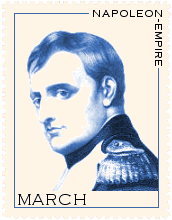
- March 1st to 31 - Napoleon did not leave Osterode [Ostróda], governing the Empire from there .
April 1807
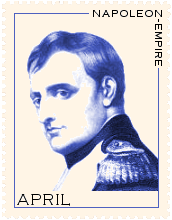
- April 1st - Napoleon left Osterode to settle 50 kilometers further west at Finckenstein Castle [53.76754, 19.37375] in Kamieniec near Susz, whose owners had fled to Memel [Klaipėda] upon his approach. This magnificent palace, the work of the English architect John von Collas, completed in 1720 [unfortunately only ruins remain following a fire in January 1945], was nicknamed at the time "the Versailles of East Prussia" .
- April 2nd - Apart from a few short absences, Napoleon would stay at Finckenstein for more than two months (until June 6th), assuming with impressive energy his role as head of state and war leader down to the smallest details, but also living a wonderful love affair with Maria Walewska – the woman he loved most in his life, along with Josephine.
- April 8 - He went to Marienwerder [Kwidzyn] [53.73610, 18.92267], 38 kilometers to the west, to supervise the construction of the bridgehead over the Vistule River [Weichsel, Wisła].
- April 21 - He received the Prussian general Gebhard Leberecht von Blücher [some sources place this audience on the 22nd].
- April 25 - He went to Marienburg [Malbork] [54.03551, 19.02516], where he slept.
- April 26 - He returned from Marienburg to Finckenstein, where he arrived at 8 p.m.
- April 27 - He received the Persian ambassador Mirza Riza Bey [a famous painting by François-Henri Mulard records this diplomatic event], and gave a grand parade in his honor.
May 1807
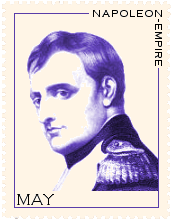
- May 4 - Also in the context of the visit of the Persian ambassador, a treaty of alliance between the two countries was signed, which unfortunately would not survive the Franco-Russian alliance of Tilsit two months later.
- May 8 - Napoleon went to Elbing [Elbląg] , 50 kilometers to the north, where he entered at 10 am by carriage through the Berlin Gate on Grenier Island. After greeting the generals, he mounted his horse and headed towards the center of the city. He was greeted by twenty cannon shots, and reviewed 18,000 horsemen (28 to 30 cavalry regiments were then stationed in Elbing and its environs, under the command of Joachim Murat). He stayed to sleep in this city.
- May 14 - He learned of the death in his fifth year of his nephew (and grandson by adoption) little Napoleon Louis Charles, son of Louis Bonaparte, King of Holland, and Hortense de Beauharnais, which occurred in The Hague [Den Haag] on May 5. The child was, according to the Constitution of the year XII, the heir to the imperial throne.
- May 25 - He went for the day to Strasburg [Brodnica] [53.24996,19.39962], 68 kilometers to the south.
- May 28 - He received the Turkish ambassador Seyyid Mehmed Emin Vahid Pasha (or Effendi), to whom he submitted an offensive and defensive alliance not only against Russia (the Sublime Porte had declared war on Russia on December 23, 1806), but also against England. The ambassador stated that he was not authorized to sign such a treaty, and the negotiations ultimately failed.
- May 31 - Napoleon left at 5 a.m. for Danzig [Gdańsk], 96 kilometers to the north-northwest, a port on the Baltic Sea and the capital of West Prussia [Westpreußen]. There he slept at the Cistercian Abbey of Oliva [Opactwo w Oliwie].
June 1807
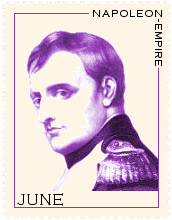
- June 1st - At Danzig, Napoleon reviewed the troops.
- June 2nd - He left Danzig for Marienburg [Malbork] which was halfway to Finckenstein.
- June 3rd - He was back in Finckenstein by 7 p.m.
- June 6th - He entered the campaign, leaving Finckenstein at 8 p.m. heading northeast, and slept at Saalfeld [Zalewo] , 20 kilometers away, at the tax inspector Glaser's on the market square [53.84599, 19.60607] [Rynek 52].
- June 7 - Still on the same course, he arrived near Deppen [Dabrówka] , where he slept at the bivouac of Marshal Ney, who commanded the VI Corps.
- June 8 - He went 39 kilometers further east, to Reichau [Boguchwaly] [53.91877, 20.07416], where he arrived in the afternoon and where he slept.
- June 9 - Having left at 3 a.m. in an east-northeast direction, he arrived at Guttstadt [Dobre Miasto] [53.98614, 20.39519], 25 kilometers further, in the evening.
- June 10 - He left at 6 o'clock, with the army (VI Corps and the Reserve Corps), in the direction of Heilsberg [Lidzbark Warmiński] [54.11667, 20.58333], to the northeast, where the Russian army had taken up its winter quarters. The city, where stood an ancient Teutonic castle , was powerfully fortified and numerous redoubts had been erected on the heights. On the French side, 50,000 men of the IV Corps and the reserve cavalry were assembled in front of the city, with the Guard in reserve; opposite, the Russians numbered 90,000. Marshals Soult and Murat then launched an attack, suffering heavy losses (more than 10,000 men), but Marshal Lannes joined them at the end of the afternoon, and supported them. Napoleon, who had advanced in the morning to a high point that allowed him to dominate the battlefield – probably towards Liewenberg [Miłogórze] [54.06771, 20.47078], then occupied a sort of castle nearby.
- June 11 - An unofficial truce was established, during which both armies recovered their wounded and attempted to bury the dead. Then the Russians began their retreat along the Alle River, and Napoleon entered Heilsberg.
- June 12 - The bloody Battle of Heilsberg over, the Emperor headed north to Preußisch Eylau [Bagrationovsk - Багратионовск] where he arrived at 2:30 p.m., and where he would stay the next day.
- June 14 - On that day, the anniversary of the victory at Marengo that had occurred seven years earlier, the Battle of Friedland [now Pravdinsk - Правдинск] took place. Napoleon learned at 10 a.m. of the start of the Russian offensive, and galloped off to join the troops of Jean Lannes, Édouard Mortier, Emmanuel de Grouchy and Étienne Champion de Nansouty ), near Postehnen [Peredovoje - Передовое, a village that has largely disappeared, sometimes spelled Posthenen] [54.43835, 20.96726], who were fighting the Russians on the banks of the Mühlen Fluß [Pravda - Правда] . He arrived there around noon, soon to be joined by the Guard. Waiting for the corps of Michel Ney and General Victor, he ordered the general attack for 5 p.m. The battle reached the streets of Friedland in the evening and the Russians were inexorably driven out. Napoleon then set up his HQ in a house [54.44586, 21.01811] near the center and then, when night fell, on the battlefield , in the middle of his guard and the entire French army.
- June 15 - He slept at Paterswalde [Bolschaja Poljana - Большая Поляна] , 26 kilometers to the north-northeast, and set up his HQ there.
- June 16 - He continued towards Tilsit, fording the Pregel River [Pregolia - Преголя] below the castle of Sanditten [Lunino - Лунино] [54.63098, 21.17314], then went to sleep in Wehlau [Znamensk - Знаменск] [54.61801, 21.23108].
- June 17 - He had lunch at Taplacken Castle [Talpaki - Талпаки] [54.65116, 21.34320], 10 kilometers east-northeast, then slept at Drusken Castle [now in ruins] [towards 54.72611, 21.44611], 11 kilometers further in the same direction, near Klein-Schirrau.
- June 18 - Still on the road to Tilsit, he had lunch at Schwirgslauken [Saretschje - Заречье] [54.85806,21.60333] and slept at Gross-Skaisgirren [Bolshakovo - Большако́во] [54.88028, 21.65278].
- June 19 - He arrived at 2 p.m. at Tilsit [Sovietsk - Советск, sometimes spelled Tilsitt in France, for pronunciation reasons], on the left bank of the Niemen River , 97 kilometers northeast of Königsberg. He had a meeting with Prince Dmitry Ivanovich Lobanov-Rostovsky (́Дмитрий Иванович Лобанов-Ростовский) , sent by General Bennigsen to discuss the conditions of an armistice.
- June 20 - In Tilsit, the negotiations continued. Napoleon sent the Grand Marshal of the Palace Géraud Michel Duroc to meet General Bennigsen.
- June 21 - A one-month armistice was concluded between the two Emperors, Napoleon and Alexander.
- June 22 - Prince Lobanov was received again, this time at Napoleon's table.
- June 24 - Napoleon reviewed Jean Lannes' Corps in the morning, then received Prince Lobanov again in the afternoon, who was the bearer of written instructions from the Tsar.
- June 25 - Napoleon and Alexander met between 1:00 and 2:30 p.m. on a raft in the middle of the Niemen .
- June 26 - A new interview on the raft took place at half past twelve, which was also attended by the King of Prussia, Frederick William III. In the evening, Napoleon received Alexander at Tilsit, paid him military honors, before a dinner that lasted until 9 p.m.
- June 27 - At 1 p.m., it was Napoleon's turn to visit the Tsar, with whom, at 4 p.m., he reviewed the Imperial Guard. At 8 p.m., he dined at the Tsar's house, which was located in the same street as him.
- June 28 - New visits and receptions between Napoleon, Tsar Alexander and the King of Prussia punctuated this day.
- June 29 - The three sovereigns walked and then dined together, as they would do for several days in a row.
- June 30 - In front of the three monarchs, French General Jean-Ambroise Baston de Lariboisière commanded the artillery of the Guard, for maneuvers mobilizing no less than sixty guns.
July 1807
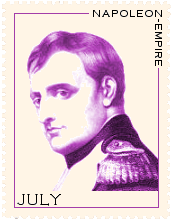
- July 1st to 5 - Napoleon and Alexander I met daily at Tilsit, sometimes in the presence of Frederick William III, for working sessions but also teas, dinners, troop reviews, horse rides , etc.
- July 6 - Napoleon received Queen Louise of Prussia [this reception was illustrated by several paintings, such as those by Jean-Charles Tardieu , Nicolas Gosse and René Théodore Berthon ]. However, her charm and coquetry would have no impact on the terms of the treaty in preparation.
- July 7 - He received in the morning Count August Friedrich Ferdinand von der Goltz , Minister of Foreign Affairs of Prussia. In the evening, he dined again with Queen Louise.
- July 8 - He paid a farewell visit to Alexander, with whom he had a conversation of several hours again.
- July 9 - After ratification of the peace treaty with Russia which had been signed on the 7th, Napoleon and Alexander remained together for another three hours, then Alexander left him at 3 p.m. and crossed the Niemen again. After a final interview with Frederick William III, the Emperor set off for Königsberg at 10 p.m.
- July 10 - Napoleon arrived in Königsberg [Kaliningrad - Калининград] at 4 in the afternoon. He would remain there until the 13th of the month.
- July 12 - The ratifications of the peace treaty with Prussia, which had been signed on the 9th, were exchanged.
- July 13 - He left Koenigsberg at 6 p.m.
- July 14 - He arrived at noon at Marienwerder [Kwidzyn], where he stopped for an hour.
- July 15 - He passed through Mogilno [52.65761, 17.95613], arrived in Posen [Poznań] at 10 p.m. and left at midnight.
- July 16 - He passed through Glogau [Głogów] around noon, but did not stop there.
- July 17 - He met the King of Saxony in Bautzen in the afternoon, then arrived in Dresden at 6 p.m., after no less than 92 hours by car.
- July 18 to 22 - Napoleon was in Dresden, spending these five days on representative, social and administrative tasks. On the 19th, he provided the Duchy of Warsaw with a constitution based on French models, and had it signed by the Polish deputies.
- July 23 - He left for Leipzig, then Weimar.
- July 24 - He stopped for a few hours in Frankfurt-am-Main, and left again at 10 p.m.
- July 25 - He was back in France. From Bar-le-Duc, he left the next day for Épernay, and arrived in Saint-Cloud on the morning of the 27th, after a total absence of ten months (combined campaigns in Prussia and Poland).
 All of Napoleon's movements from 1769 to 1821
All of Napoleon's movements from 1769 to 1821
Photos credits
Photos by Lionel A. Bouchon.Photos by Didier Grau.
Photos by Michèle Grau-Ghelardi.
Photos by Marie-Albe Grau.
Photos by Floriane Grau.
Photos by various authors. Our warmest thanks to Mr Ugo Valfer.